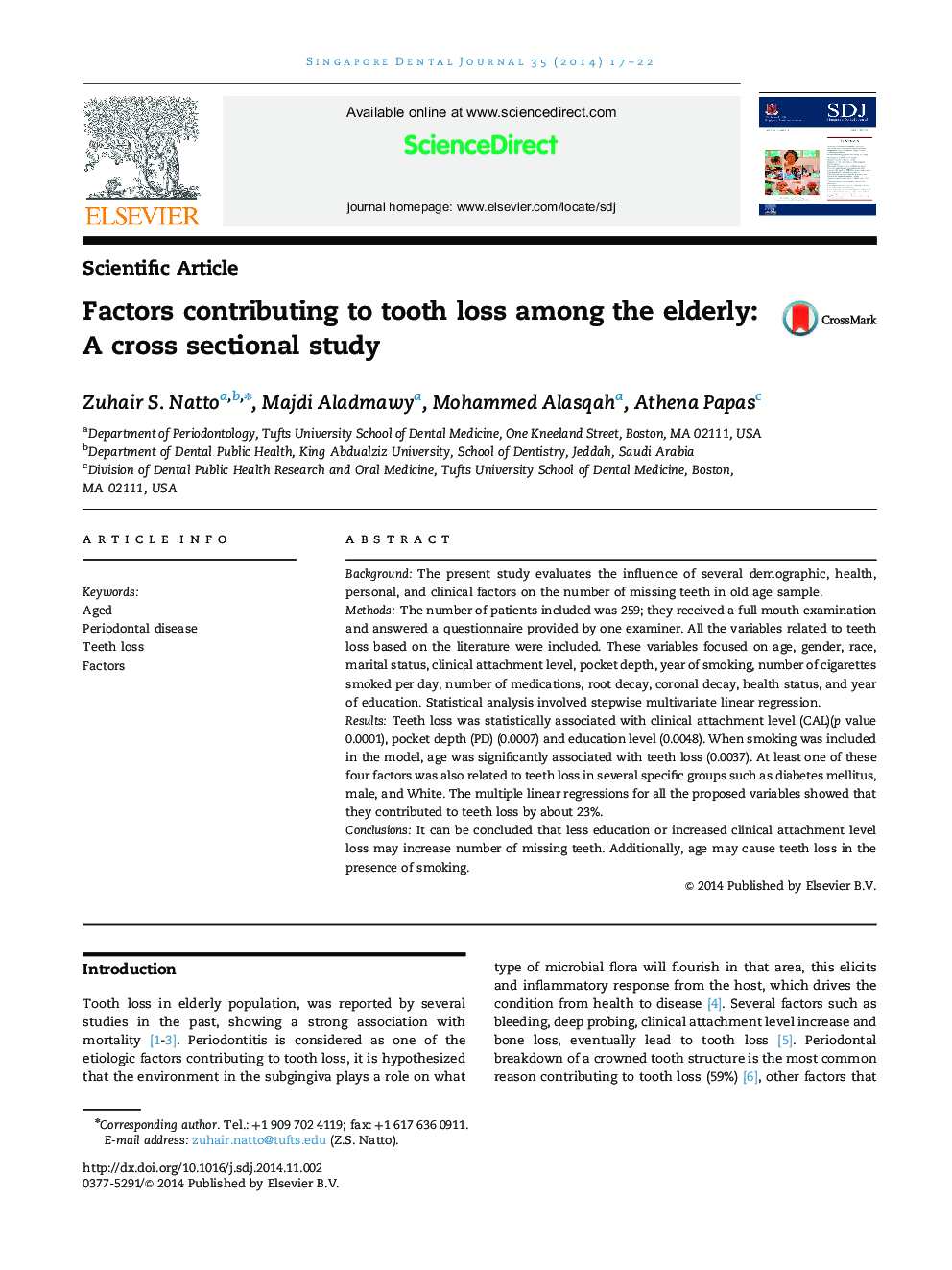| Article ID | Journal | Published Year | Pages | File Type |
|---|---|---|---|---|
| 3837167 | Singapore Dental Journal | 2014 | 6 Pages |
BackgroundThe present study evaluates the influence of several demographic, health, personal, and clinical factors on the number of missing teeth in old age sample.MethodsThe number of patients included was 259; they received a full mouth examination and answered a questionnaire provided by one examiner. All the variables related to teeth loss based on the literature were included. These variables focused on age, gender, race, marital status, clinical attachment level, pocket depth, year of smoking, number of cigarettes smoked per day, number of medications, root decay, coronal decay, health status, and year of education. Statistical analysis involved stepwise multivariate linear regression.ResultsTeeth loss was statistically associated with clinical attachment level (CAL)(p value 0.0001), pocket depth (PD) (0.0007) and education level (0.0048). When smoking was included in the model, age was significantly associated with teeth loss (0.0037). At least one of these four factors was also related to teeth loss in several specific groups such as diabetes mellitus, male, and White. The multiple linear regressions for all the proposed variables showed that they contributed to teeth loss by about 23%.ConclusionsIt can be concluded that less education or increased clinical attachment level loss may increase number of missing teeth. Additionally, age may cause teeth loss in the presence of smoking.
